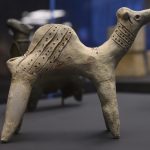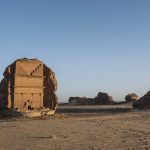
Riyadh – Najran, located in the southern region of Saudi Arabia, has been among the most important historical regions comprising more than 100 sites. The recent explorations have showed that Najran witnessed the emergence of many civilizations with some going back to the Stone Age; archeologists have found traces of humanitarian civilization that lived thousands of years ago – they also discovered traces of ancient lakes that urged the old Arab kingdoms on fighting to control these green oases. Thus, Najran’s location enjoyed an economic significance by being a major path for one of the most important old trade routes.
Groove Owners
Najran witnessed through its history important incidents like many military campaigns launched by major powers during different phases. Some of these incidents led to the blockade and occupation of the city, others led to its devastation; the most renowned was the invasion of the “groove”, which has been mentioned in the Holy Koran during which thousands of people were killed in a huge holocaust 1,500 years ago.
The region also includes historic monuments from the Byzantine, Umayyad, and Abbasid eras which assert that Najran was an important commercial and agricultural site.
This city, with its historic content, has been considered a vital museum; explorations led to discover many epigraphs for writing in Musnad used by the Ḥimyarite Kingdom (115 B.C and 14 A.D.), hieroglyphic epigraphy in addition to old Islamic traces; but the most important was the discovery of many drawings for some animals and a number of important handmade crafts, which proved the existence of humans in the region during the stone age.
Saudi Arabian-French Mission for Excavation
These continuous explorations came after the Saudi Commission for Tourism & National Heritage has inked an agreement of scientific cooperation with the French National Center for Scientific Research – according to which five seasons of excavation will be carried on in Najran.
The mission succeeded in discovering traces from many historic eras like the Bronze Age, and the Old Islamic Kingdoms. It also discovered many epigraphs from the first and second centuries of Hegira.
Presently, more than 30 archeological missions work under the surveillance of the Saudi Commission for Tourism & National Heritage including a team specialized of Saudi Arabian and foreign experts in research and excavation. The works of these missions have revealed many important results about the history of the Kingdom, the Arabian Peninsula, and the human history.















